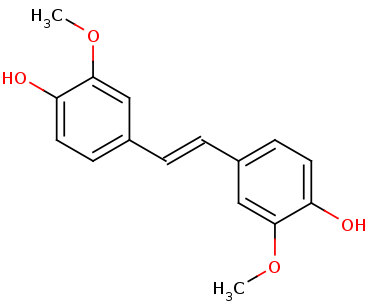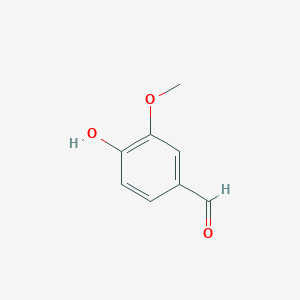Function(s) and Biological Relevance
Lignostilbene-α,β-dioxygenase (LsdA) from the bacterium 'Sphingomonas paucimobilis'. It is a nonheme iron oxygenase that catalyzes the cleavage of lignostilbene, a compound
arising in lignin transformation, to two vanillin molecules. The substrate for this enzyme is lignostilbene. [1]. Phenylazophenol inhibited the LsdA-catalyzed cleavage of lignostilbene in a reversible, mixed fashion. Lignin is used in biofuel production. Lignin is a heterogeneous aromatic polymer found in plant cell walls that contributes to the recalcitrance of biomass. Below are two images. On the left is Lignostilbene, and on the right is Vanillin for comparison.


Broader Implications
To examine LsdA’s substrate specificity, we heterologously produce the dimeric enzyme with the help of chaperones. When tested on several substituted stilbenes, LsdA exhibited the greatest specificity for lignostilbene. These experiments further indicate that the substrate’s
4-hydroxy moiety is required for catalysis and that this moiety
cannot be replaced with a methoxy group. This expands our mechanistic understanding of LsdA and related stilbene-cleaving dioxygenases. [2].
Structural highlights and structure-function relationships
The of this protein is primarily made of the amino acids that are the main factor in catalysis. The 3 amino acids are Phe-59, Tyr101, and Lys-134. The is a fold of LsdA of a seven-bladed -propeller, typical of the carotenoid cleavage oxygenates (CCO's), which usually catalyze the oxidative cleavage of a double bond in carotenoids. [3].
The structures also consist of α-helices and ß-sheets. The occurs at the center of the propeller and contains an Fe2+. The and view of the ligand in the protein, which shows that both hydrophilic and hydrophobic residues are important to the ligand in the binding site.
The space fill view allows us to see the different binding sites for this protein, the binding site is allosteric. The binding site for this protein has a very restrictive accessibility. The for this protein is called NSL.
Energy Transformation
Phenylazophenol inhibits the LsdA-catalyzed cleavage of lignostilbene in a reversible, mixed fashion. The substrate specificity studies of LsdA are consistent with
previous reports that the enzyme cleaves only 4-hydroxystilbenes. More particularly, it had previously been determined that LsdA does not cleave 2-hydroxy, 3-hydroxy, or 4-methoxy stilbenes. The protein serves to cleave and transform lignostilbene to two vanillins. [4].


